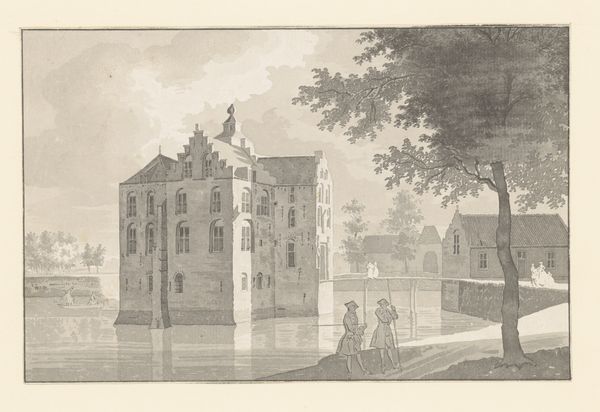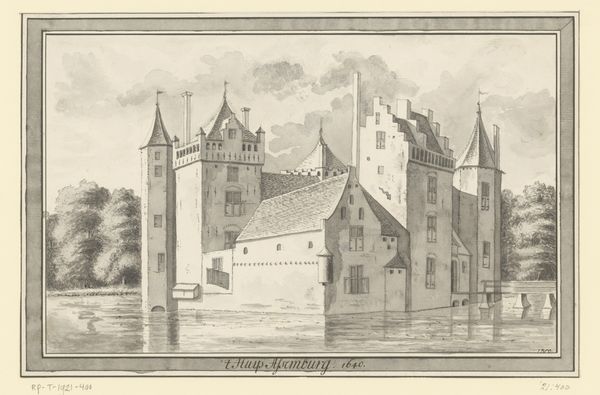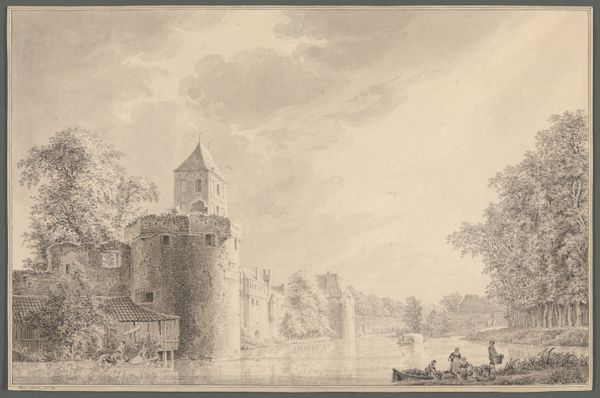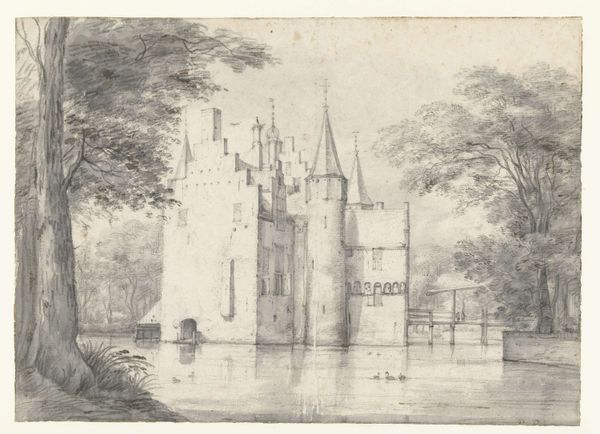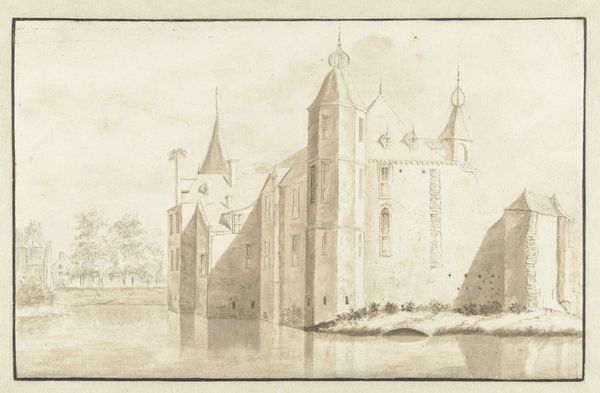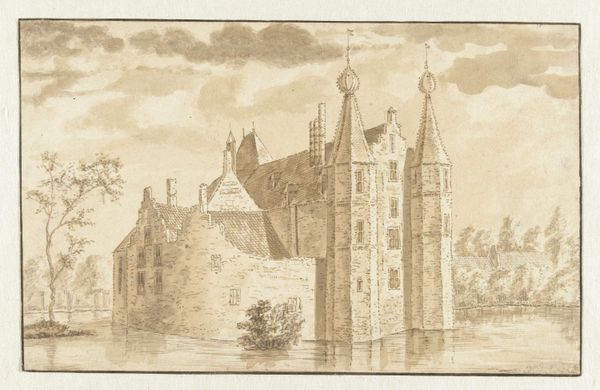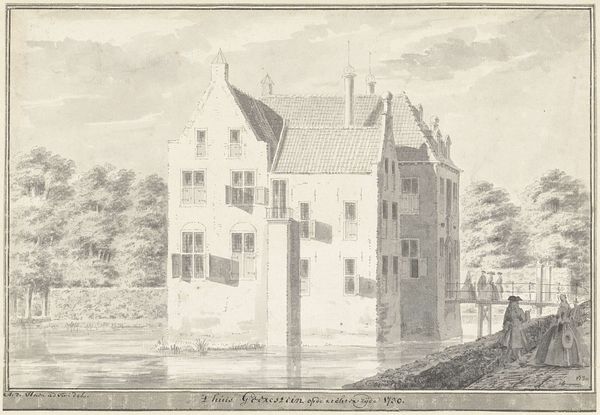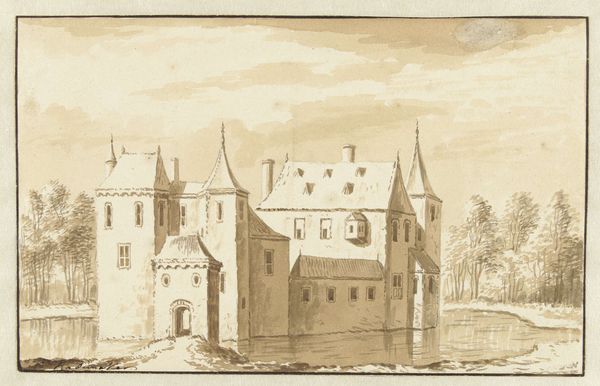
drawing, coloured-pencil, paper, watercolor, ink, chalk, graphite, architecture
#
drawing
#
netherlandish
#
coloured-pencil
#
baroque
#
landscape
#
paper
#
watercolor
#
ink
#
coloured pencil
#
chalk
#
graphite
#
watercolor
#
architecture
Copyright: Public Domain
Editor: This is Roelant Roghman’s "t' Huys te Loenersloot," created in 1647 using ink, watercolor, and chalk on paper. I’m struck by the way the building seems to rise directly from the water, like a fortified island. What's your take on this piece? Curator: It's fascinating to consider this work in its historical context. The Dutch Golden Age was a period of immense wealth and burgeoning artistic production, and landscapes were more than just pretty pictures. They often served as affirmations of ownership and status. Consider how the artist emphasizes the imposing structure and its relationship to the land around it. Do you think this imagery reinforces the power dynamic between the elite landowners and the wider populace? Editor: Absolutely, it does. The castle is so dominant; you can practically feel the power radiating from it. The reflection in the water almost doubles the impact, further amplifying its grandeur. Was Roghman aiming to make a political statement, or was this simply a commission to showcase the estate? Curator: Likely, it was commissioned. But even within commissioned work, artists made choices. Roghman’s decision to portray the castle in this specific manner speaks to a larger cultural trend: the celebration of private property and the consolidation of wealth during this era. The piece functions almost like a real estate brochure for the upper class! Editor: I see what you mean! It's less about nature itself, and more about controlling and displaying it. This has completely changed my perspective. Curator: That’s the beauty of art history - peeling back the layers to reveal the socio-political forces at play. We get a glimpse into how landscapes were tools in the visual construction of power. Editor: It’s amazing to realize how much more there is to landscape art than meets the eye! Thank you.
Comments
No comments
Be the first to comment and join the conversation on the ultimate creative platform.

